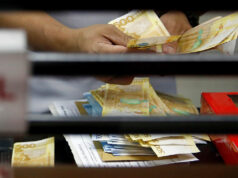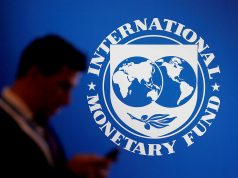Current account deficit shrinks in 2019
THE country’s current account deficit shrank to $464 million in 2019, due to “lower trade in goods deficit combined with higher net receipts in the trade in services, and in the primary and secondary income accounts, the Bangko Sentral ng Pilipinas said on Friday.
Data from the BSP showed a current account gap of $464 million last year, significantly lower than the $8.773 billion deficit seen in 2018.
The current account portrays a picture of the country’s overall economic interaction with the rest of the world covering trade in goods and services; remittances from overseas Filipino workers; profit from Philippine investments abroad; interest payments to foreign creditors; as well as gifts, grants and donations to and from abroad.
At its 2019 level, the current account made up 0.1% of the country’s gross domestic product (GDP), compared to the 2.4% of GDP in 2018.
The central bank said that imports of goods fell mainly due to the “slowdown in importation of raw materials such as construction materials related to the Build Build Build project of the government during the first half of the year, as well as the decline in volume and price of imported crude oil in the world market.”
At the same time, exports of goods went up as shipments of electronic products, and fruits and vegetables increased.
“It is well known that the 2019 budget was delayed, and consequently, the planned infrastructure spending played catch-up until the end of the fiscal year. This delay largely affected import performance causing the decline in the current account deficit,” UnionBank of the Philippines, Inc. Chief Economist Ruben Carlo O. Asuncion said via email.
In the fourth quarter of 2019, the current account was at a surplus of $748 million, reversing the $2.701 billion deficit in 2018.
“This development stemmed primarily from the reduced deficit in the trade in goods account along with increased net receipts of primary and secondary income, and trade in services during the quarter,” the BSP said.
In 2019, the balance of payment (BoP) position of the country was at a surplus of $7.843 billion, reversing the $2.306 billion deficit seen in 2018.
For 2020, the central bank expects the country’s BoP position to hit a surplus of $3 billion.
This year, analysts warned that the pandemic will greatly impact the BoP. The coronavirus outbreak prompted the government to implement a Luzon-wide enhanced community quarantine, causing disruption to many businesses.
“2020 BoP and the COVID-19 pandemic paints a picture of uncertainty that trying to forecast may be counterproductive,” Mr. Asuncion said.
“However, I still see a slight economic recovery of the Philippine economy towards the second half of 2020 that may push the BoP position to a deficit,” he added.
For his part, Rizal Commercial Banking Corp. Chief Economist Michael L. Ricafort said that there could be some relief from uncertainties due to the impact of the outbreak on the economy and financial markets.
“This could still be offset by any continued growth in OFW (overseas Filipino workers) remittances, BPO (business process outsourcing) revenues, and foreign investments, especially if the coronavirus is contained in the coming months,” he said. — Luz Wendy T. Noble



